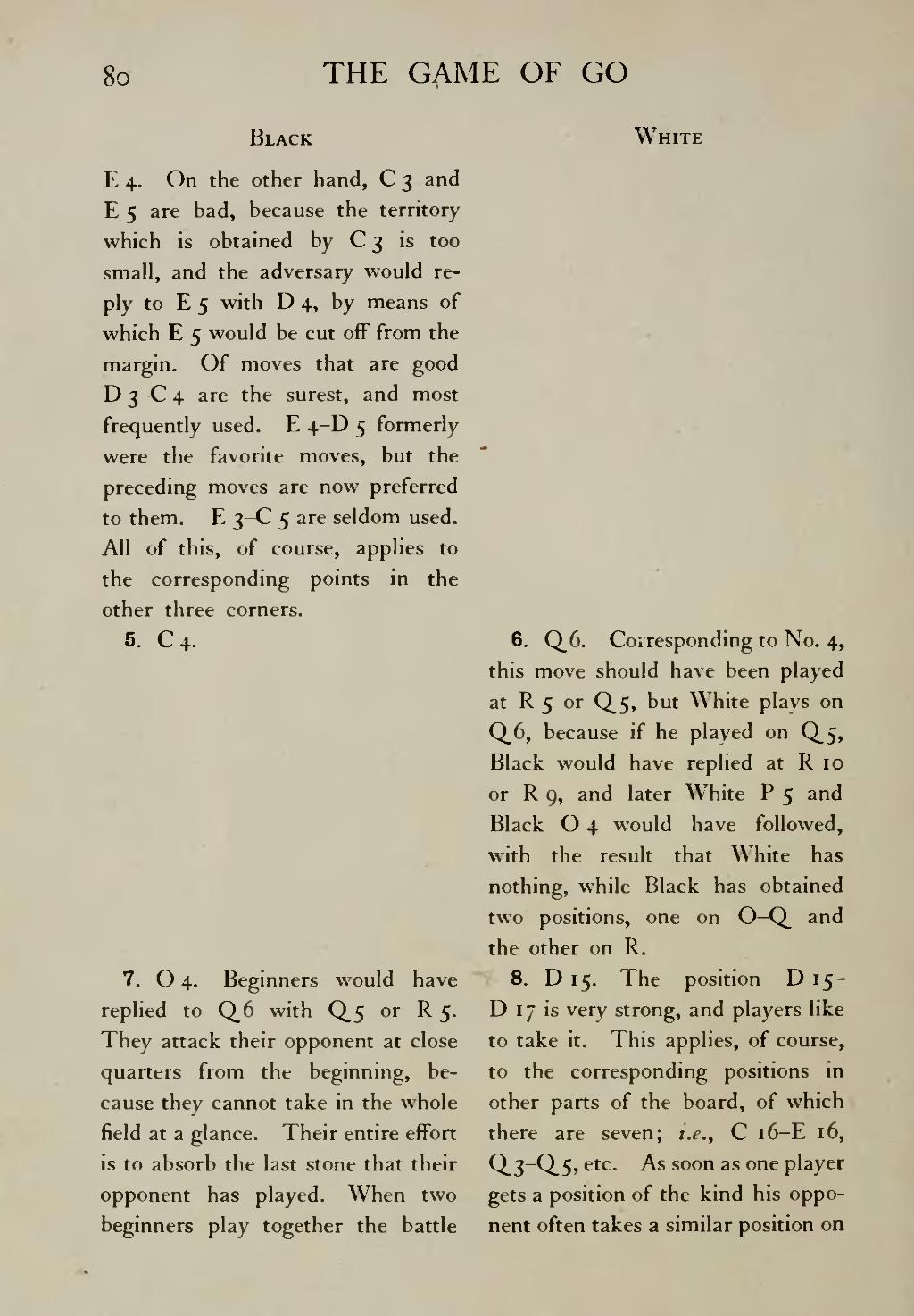|
Black
|
White |
|
E 4. On the other hand, C 3 and E 5 are bad, because the territory which is obtained by C 3 is too small, and the adversary would reply to E 5 with D 4, by means of which E 5 would be cut off from the margin. Of moves that are good D 3–C 4 are the surest, and most frequently used. E 4–D 5 formerly were the favorite moves, but the preceding moves are now preferred to them. E 3–C 5 are seldom used. All of this, of course, applies to the corresponding points in the other three corners. |
|
|
5. C 4. |
6. Q 6. Corresponding to No. 4, this move should have been played at R 5 or Q 5, but White plays on Q 6, because if he played on Q 5, Black would have replied at R 10 or R 9, and later White P 5 and Black O 4 would have followed, with the result that White has nothing, while Black has obtained two positions, one on O–Q and the other on R. |
|
7. O4. Beginners would have replied to Q 6 with Q 5 or R 5. They attack their opponent at close quarters from the beginning, because they cannot take in the whole field at a glance. Their entire effort is to absorb the last stone that their opponent has played. When two beginners play together the battle |
8. D 15. The position D 15–D 17 is very strong, and players like to take it. This applies, of course, to the corresponding positions in other parts of the board, of which there are seven; i.e., C 16–E 16, Q 3–Q 5, etc. As soon as one player gets a position of the kind his opponent often takes a similar position on |
Page:Smith - The game of go.djvu/106
Jump to navigation
Jump to search
This page has been validated.
80
THE GAME OF GO
